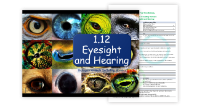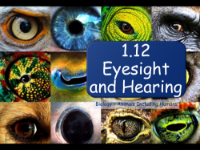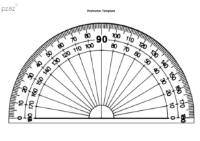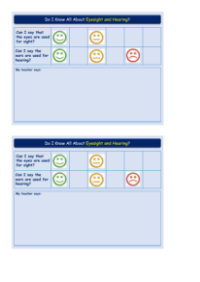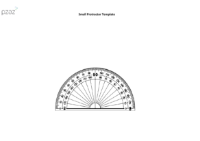Eyesight and Hearing - Lesson Plan
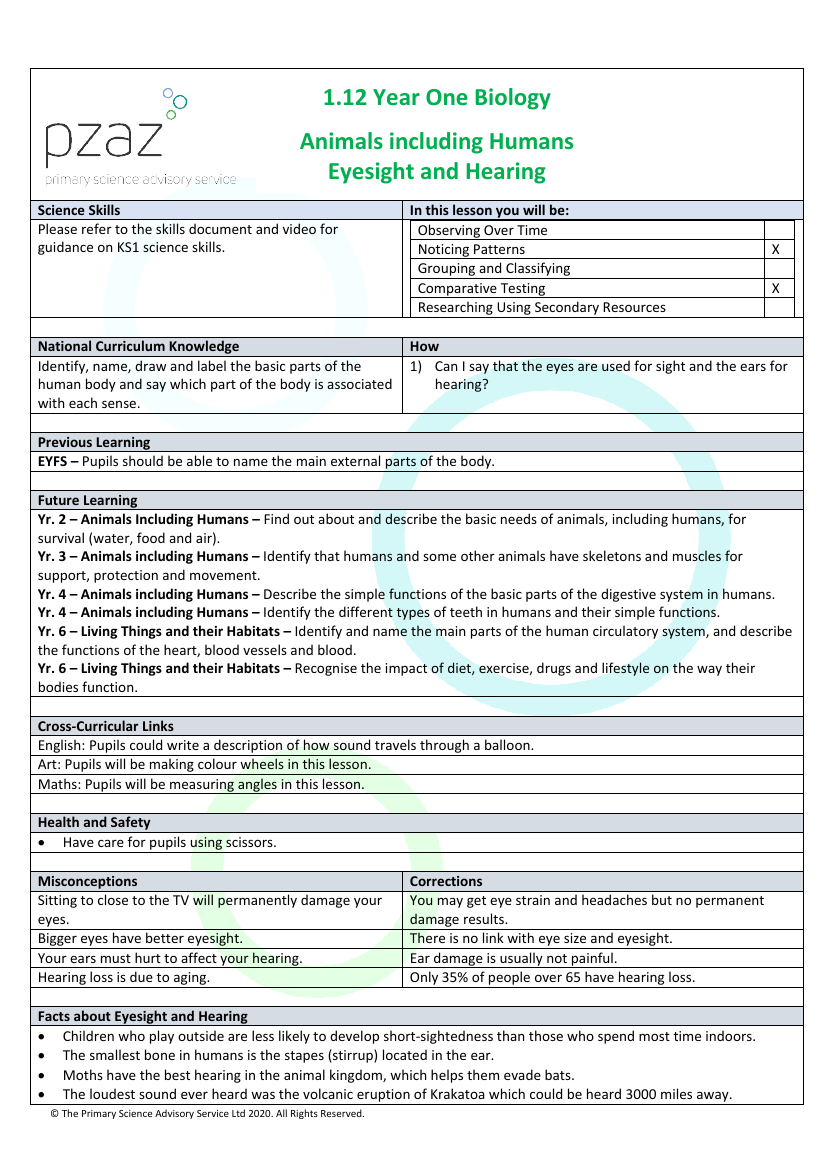
Science Resource Description
In this engaging and educational lesson plan, Year 1 students will explore the senses of eyesight and hearing as part of their science curriculum. The lesson aims to help students identify and name the basic parts of the human body associated with these senses. Pupils will confirm their understanding that the eyes are for seeing and the ears are for hearing, building on their previous knowledge from the Early Years Foundation Stage of naming main external body parts. This lesson also sets the stage for future learning, where students will delve deeper into the human body's functions and needs, including the skeletal and circulatory systems. Through a series of hands-on activities, including peripheral vision tests and creating a Newton wheel, students will observe over time and conduct comparative testing to understand these senses better. They will also correct common misconceptions, such as the belief that sitting too close to the TV causes permanent eye damage or that bigger eyes have better eyesight.
Throughout the lesson, pupils will be provided with various pieces of equipment, such as a giant A3 protractor, small stickers, and coloured pens, to engage in activities that test their vision and hearing. For example, they will create small squares with different colours and words to measure the angles at which they first notice motion, colour, shape, and text. They will also investigate optical illusions and conduct a hearing test to understand the range of frequencies they can hear. Additionally, pupils will participate in an activity using balloons to learn how sound vibrations travel and create a simple telephone using cups and string to explore how sound can move through different mediums. These experiments are designed to foster curiosity and understanding of how our senses work, with a focus on safety, such as being careful when using scissors. The lesson concludes with a plenary session where students assess their learning and articulate their understanding of the senses of sight and hearing.

